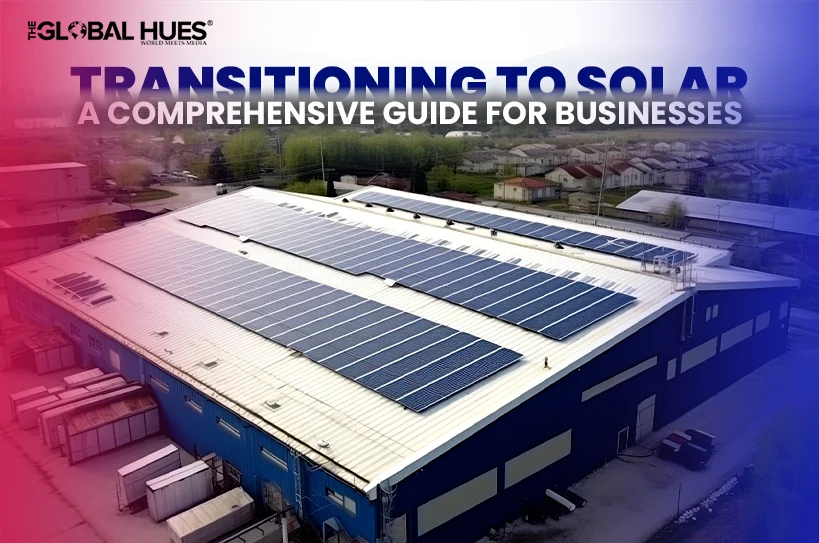Businesses are always on the lookout for ways to cut costs and be more eco-friendly. These days, the two often go hand in hand, especially since customers and investors are pushing for greener practices. That’s where solar power comes in. It’s a win-win solution that’s really taking off. In fact, market research analysts anticipate its global industry to be worth a massive USD$373.84 billion by 2029, growing about 6.9% each year. This figure is a clear sign that businesses worldwide are warming up to solar in a big way.
In this comprehensive guide, we’ll walk you through the ins and outs of solar tech. We’ll cover its pros and give you the scoop on how to make the switch without any hiccups. Ready to learn more about powering your business with sunshine? Let’s get started.
Quick overview of solar power
Solar power is energy from the sun’s radiation, converted into electricity using various technologies. This renewable energy source has been key in finding eco-friendly energy solutions, especially for businesses and industries. This innovative technology typically consists of several key components, such as:
- Solar panels
- Inverter
- Battery storage (optional)
- Charge controller (for battery systems)
- Mounting and racking
- Monitoring system
All these parts work together to turn sunlight into electricity. Sounds tricky? No sweat. There are commercial solar panel installation services that do this job day in, and day out. They can handle everything—figuring out what you need, getting it all setup, and making sure it keeps running smoothly. They’ll be there every step of the way, so you don’t have to scratch your head over the details.
Advantages of investing in solar power for your business
As concerns about climate change intensify and energy costs continue to fluctuate, solar energy offers viable benefits for businesses of all sizes.
Cost-effective
One of the most compelling reasons to switch to solar power is the potential for significant cost savings.
Sure, getting set up with solar panels isn’t cheap. But here’s the thing—you can earn that money back, and then some. How? Well, there are a couple of ways.
First off, the government wants to help. If you’re in the US, there’s this neat thing called the Federal Investment Tax Credit (ITC). It allows businesses to deduct a significant portion of their solar installation costs from their federal taxes. This incentive can offset up to 30% of the total system costs for solar projects initiated before 2023. Quite a favourable opportunity, isn’t it?
And it gets even better. Once your solar panels are up and running, watch your energy bills shrink. By generating your own power, you reduce your reliance on purchasing electricity from the grid. And when energy prices go up (which they tend to do), you won’t feel the pinch as much.
So, it’s safe to say that solar technologies might cost you a bit upfront. But in the long run? It could save your business a pretty penny.
Go green, get noticed
Solar power isn’t just good for your wallet—it’s great for the planet, too. By cutting down on carbon emissions, you’re doing your part to fight climate change. Plus, customers love a business that cares about the environment. It could boost your sales and keep them coming back.
Increased property value
Here’s a fun fact: homes with solar panels are worth about 4% more than those without. The same goes for your commercial property. Potential buyers and investors often view solar-equipped properties as more attractive due to the associated cost savings and sustainability benefits.
Boosted brand image
Using solar energy showcases your commitment to sustainability. This can improve customer perception, potentially leading to increased sales and customer loyalty, especially among environmentally conscious consumers.
The promising benefits make solar an increasingly attractive option for forward-thinking companies like yours.
Steps to transitioning to solar power system

Ready to make the switch? Well, let’s dive into the essential steps to transitioning to a solar power system for your business:
Energy audit
Begin by analyzing your current energy consumption patterns. This helps determine the size of the solar system you’ll need and identifies potential areas for energy efficiency improvements.
Site evaluation
A professional assessment of your property will determine if the location is suitable for solar panels. Factors such as roof space, orientation, and shading are considered to ensure optimal solar energy production.
System design
Based on your energy needs and site conditions, a solar expert will design a system that maximizes energy production and efficiency. This includes selecting appropriate panels, inverters, and battery storage.
Choose the best solar technology
There are various solar technologies available, including monocrystalline, polycrystalline, and thin-film panels. Each has its pros and cons, so selecting the right one depends on your specific needs and budget. You may also research and select a reputable solar installation company. Look for certifications, experience, warranties, and customer reviews.
Installation
The chosen provider will install the solar panels, inverters, and other necessary equipment. This typically takes one to three days for smaller installations, but commercial projects may require more time, depending on the system’s complexity and size.
Monitor and maintain your system
Like any system, regular monitoring and maintenance are essential to ensure it operates at peak efficiency. Many installers offer maintenance packages to keep your system in top condition.
The whole process usually takes a few months from start to finish, but the actual on-site work is relatively quick.
Conclusion
Switching to solar energy system is a smart move for businesses. Not only will you save on operational costs, but you’ll also contribute positively to the environment. Who wouldn’t want that? Many companies are jumping on this bandwagon, and for good reason. If you do it right, making the transition doesn’t have to be a headache or break the bank.
Think long-term. Down the road, this move could really pay off for your business. So why not consider it? You might be surprised at how much sense it makes for your business.
*The information in this article does not necessarily reflect the views of The Global Hues. We make no representation or warranty of any kind, express or implied, regarding the accuracy, adequacy, validity, reliability, availability or completeness of any information in this article.*


